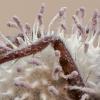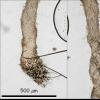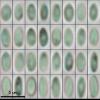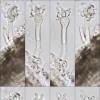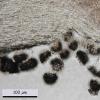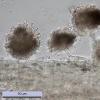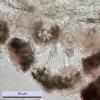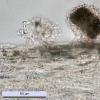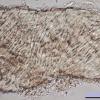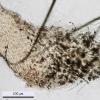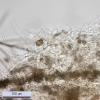
17-12-2025 18:35
 Michel Hairaud
Michel Hairaud
Bonjour 횪 tous/Hi to everyone혻I am passing along

15-12-2025 15:48
 Danny Newman
Danny Newman
Melanospora cf. lagenaria on old, rotting, fallen

15-12-2025 15:54
 Johan Boonefaes
Johan Boonefaes
Unknown anamorph found on the ground in coastal sa

15-12-2025 21:11
 Hardware Tony
Hardware Tony
Small clavate hairs, negative croziers and IKI bb

15-12-2025 07:09
 Danny Newman
Danny Newman
indet. Rutstroemiaceae sp. on unk. fallen leavesMc

15-12-2025 07:05
 Danny Newman
Danny Newman
Pseudosclerococcum golindoi혻(det: Zotto)near Cosb

15-12-2025 11:49
 Danny Newman
Danny Newman
ITS sequences from the following two collections B

15-12-2025 12:34
 Danny Newman
Danny Newman
indet. Rhytismataceae on oak leafnear Purchase Roa
Gibellula arachnophila f pleiopus?
Miguel 횁ngel Ribes,
13-02-2014 00:42
 Hi again
Hi againI think this is more interesting.
On a spider, 2,5-3 mm tall, light pink synemmata.
Conidiospores:
(3.48) 3.87 - 4.52 (4.98) x (1.65) 1.89 - 2.20 (2.41) 쨉m
Q = (1.61) 1.86 - 2.30 (2.58) ; N = 46
Me = 4.18 x 2.03 쨉m ; Qe = 2.07
Thanks in advance혻
Miguel 횁. Ribes
Nicolas VAN VOOREN,
13-02-2014 07:35

Re : Gibellula arachnophila f pleiopus?
Hi Miguel.
I think your collection matches Gibellula pulchra. The conidiophores of G. leiopus are very short and the conidia are a little bit more longer (4-5 쨉m).
I'm going to send to you a paper of A. Kub찼tov찼 about G. leiopus.
I think your collection matches Gibellula pulchra. The conidiophores of G. leiopus are very short and the conidia are a little bit more longer (4-5 쨉m).
I'm going to send to you a paper of A. Kub찼tov찼 about G. leiopus.
Miguel 횁ngel Ribes,
13-02-2014 09:17

Re : Gibellula arachnophila f pleiopus?
Hi Nicolas
It looks like G. pulchra, more than G. leiopus, but I am not capable to distinguish both species . I have found more papers and pictures about G. pulchra in the internet, wich requires a more careful reading.
But, what is the picture n쨘 5, which was present mainly in the stem, while conidiophores (pictures 6-9) where present mainly in the cap?
Thanks about the paper.
Miguel 횁. Ribes
It looks like G. pulchra, more than G. leiopus, but I am not capable to distinguish both species . I have found more papers and pictures about G. pulchra in the internet, wich requires a more careful reading.
But, what is the picture n쨘 5, which was present mainly in the stem, while conidiophores (pictures 6-9) where present mainly in the cap?
Thanks about the paper.
Miguel 횁. Ribes
Nicolas VAN VOOREN,
13-02-2014 15:08

Re : Gibellula arachnophila f pleiopus?
Conidiophores can be present on the stem, this is what is shown on the 5th picture.
Miguel 횁ngel Ribes,
13-02-2014 22:12

Re : Gibellula arachnophila f pleiopus?
Ooops, I thought conidiophores were pictures 6-9 ( like in G. pulchra), and picture 5 are 쩔? another type of conidiophores, more similar to G. pleiopus ones.


